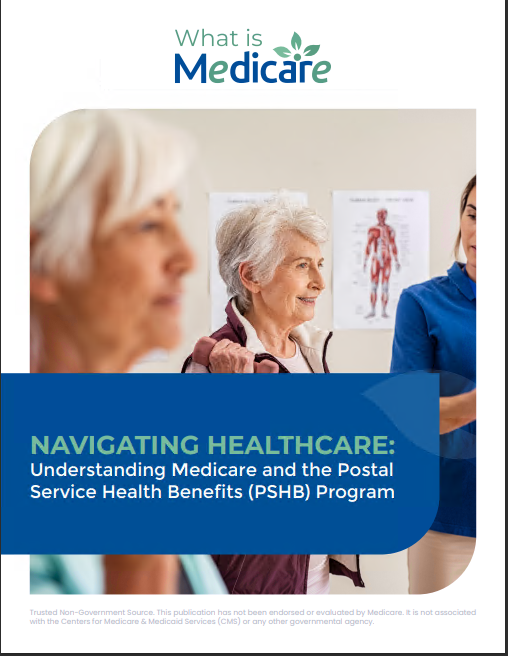Key Takeaways:
-
Medigap Plans Fill the Gaps in Medicare: Medicare alone doesn’t cover everything. Medigap plans help cover costs like copayments, coinsurance, and deductibles, giving you peace of mind against unexpected medical bills.
-
Avoid Surprise Bills: With Medigap, you’re better equipped to handle sudden medical expenses that catch many off guard—especially those related to hospitalization and skilled nursing care.
Why Medigap is Your Safety Net
If you’ve already got Medicare, you’re probably aware of how helpful it is in covering a wide range of medical expenses. But what a lot of people don’t realize is that Medicare doesn’t cover everything. There are gaps—hence the nickname “Medigap” for these supplemental plans—that could lead to you paying out of pocket for some pretty hefty costs. Those “surprise bills” we all dread? That’s where Medigap swoops in to save the day.
You might be thinking, “I’ve already got Medicare. Isn’t that enough?” Well, not always. Let’s dive into why having Medigap can be a crucial safety net that shields you from unexpected medical expenses.
What Does Medicare Actually Cover?
To understand why Medigap is so important, it helps to know exactly what Medicare does and doesn’t cover. Medicare is divided into different parts:
- Part A (Hospital Insurance) covers inpatient hospital stays, skilled nursing facility care, hospice, and some home health care.
- Part B (Medical Insurance) covers things like outpatient care, doctor visits, preventive services, and durable medical equipment.
While this sounds comprehensive, there are still costs associated with these services that Medicare doesn’t cover 100%. This includes deductibles, copayments, and coinsurance. For instance, in 2024, Medicare Part A has a hospital deductible of $1,632 per benefit period. Imagine being hospitalized more than once in a year—those costs can add up fast.
The Hidden Costs You May Not See Coming
Now let’s talk about those sneaky expenses you might not anticipate. Even though Medicare covers a good chunk of your healthcare needs, gaps in coverage can leave you facing bills you didn’t expect.
For instance, if you need extended care in a skilled nursing facility, Medicare Part A will cover the full cost for only the first 20 days. After that, you’re responsible for coinsurance of $204 per day for days 21-100. If you stay longer, you could be hit with some pretty high out-of-pocket costs.
Another surprise? Outpatient care under Medicare Part B. Once you meet the annual deductible ($240 in 2024), you’ll still pay 20% of the Medicare-approved amount for services. That 20% can stack up quickly if you need frequent doctor visits, medical tests, or outpatient procedures.
How Medigap Steps In to Save You
Medigap, or Medicare Supplement Insurance, steps in to help with these exact types of expenses. It’s designed to “fill the gaps” in Original Medicare, covering costs like copayments, coinsurance, and deductibles. Medigap essentially reduces the likelihood that you’ll be hit with those dreaded surprise medical bills.
Here’s what’s particularly great about Medigap: it gives you predictable costs. With a Medigap plan, you can budget more easily for healthcare expenses because you won’t be caught off guard by sudden, out-of-pocket costs for covered services.
For example, if you’re admitted to the hospital, a Medigap plan can cover the hospital deductible (remember that $1,632 from Part A?). If you end up needing extended care in a skilled nursing facility, Medigap can help with the daily coinsurance once you pass that 20-day mark.
Understanding Your Out-of-Pocket Limits with Medigap
One of the most significant advantages of Medigap is that it provides a safety net against rising out-of-pocket expenses. Original Medicare does not cap your out-of-pocket spending for covered services, meaning that in a bad year—say, if you need multiple surgeries or treatments—you could end up paying thousands. Medigap, on the other hand, drastically reduces the risk of getting slammed with high medical costs.
Think of it this way: with Medigap, you’re less likely to be blindsided by big, unpredictable bills, because many of those gaps are filled. You’ll know exactly how much of your care is covered, and you can rest easier knowing you won’t face massive bills that could upend your budget.
What Medigap Doesn’t Cover
It’s important to be clear about what Medigap won’t cover, too. Medigap plans do not cover everything. For example, they generally don’t include coverage for prescription drugs—that’s where Medicare Part D comes in. They also don’t cover routine dental, vision, or hearing care. And, if you’re planning any international travel, know that Medigap offers only limited coverage outside the United States.
Still, even though Medigap doesn’t cover everything, it does a fantastic job of handling the big-ticket items that can sneak up on you.
When Should You Get a Medigap Plan?
Timing is key with Medigap. The best time to enroll is during your Medigap Open Enrollment Period, which is a six-month window starting the first month you have both Medicare Part B and are 65 or older. During this time, insurance companies can’t refuse to sell you a Medigap policy, and they can’t charge you higher premiums based on your health. This is a crucial period because if you wait until later, you might have to go through medical underwriting, which means you could be denied coverage or charged more if you have pre-existing conditions.
This window is your golden opportunity to lock in the coverage that can prevent surprise bills down the road.
Why Medigap is Especially Crucial for Hospital Stays
Let’s face it—hospital stays are expensive. Even with Medicare Part A, you’re still on the hook for the deductible and coinsurance after day 60 of a hospital stay. As mentioned earlier, the deductible in 2024 is $1,632, and after 60 days, you’re looking at a daily coinsurance of $408 for days 61-90.
With Medigap, those costs can be covered, so you won’t have to worry about being discharged with a hefty bill waiting for you. Long hospital stays are one of the most common sources of surprise medical bills, and this is exactly where Medigap shines. It turns what could be a financial nightmare into a manageable situation.
How Medigap Helps with Skilled Nursing Facility Care
Let’s talk a bit more about skilled nursing facility care. As I mentioned earlier, Medicare covers the first 20 days in full, but after that, you’re on the hook for $204 per day from days 21-100 in 2024. That’s over $6,000 if you stay for the full period.
Medigap covers those coinsurance costs, so you don’t have to worry about draining your savings if you need extended care. It’s peace of mind in a place where many people are caught off guard by the costs.
What About Doctors and Specialists?
Doctor visits and specialist care under Medicare Part B come with a 20% coinsurance after you meet your deductible ($240 in 2024). If you need frequent care, that 20% can add up quickly. Medigap covers that 20% coinsurance, which means you’re not paying out of pocket every time you see a doctor or specialist.
That’s another area where Medigap helps you avoid surprise bills. You’ll know what to expect and can focus on getting the care you need instead of stressing over the costs.
Wrapping it Up: Medigap as Your Financial Guardrail
When it comes down to it, Medigap is like having an extra layer of protection between you and medical bills you didn’t see coming. Medicare is fantastic, but it doesn’t cover everything—and those gaps can be expensive. With Medigap, you can fill in those gaps and breathe a little easier knowing that unexpected hospital stays, skilled nursing care, or frequent doctor visits won’t leave you with a financial headache.
So, if you’re looking to avoid those “gotcha” bills that can come with Medicare, Medigap is your best bet.










